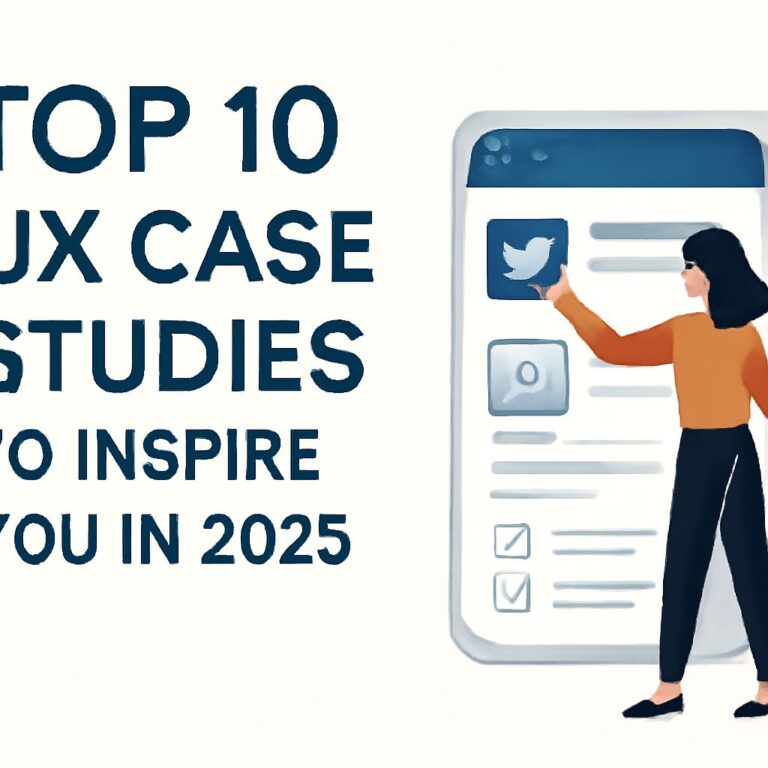Table of Contents
Top 8 UX Case Studies to Inspire You in 2025
User Experience (UX) design is a constantly evolving field, where understanding the user journey and behaviors is paramount to creating successful products. As we move into 2025, several case studies stand out, showcasing innovative solutions and inspiring designs. This article delves into eight remarkable UX case studies that can motivate designers and businesses alike to enhance their user experience.
1. Airbnb: Redesigning for Trust
Airbnb’s UX team recognized that trust is a significant factor for users when booking accommodations. To address this, they revamped their interface by implementing a new review system and enhanced profile verification. This study highlights:
- Challenge: Users hesitated to book due to trust issues.
- Solution: Introduced verified profiles and a more transparent review process.
- Outcome: Increased user bookings by 30% within six months.
2. Spotify: Personalization Through Data
Spotify has always been at the forefront of user-centered design. In their 2025 case study, they focused on enhancing personalization through sophisticated algorithms that analyze user behavior. Key takeaways include:
| Enhancement | Impact |
|---|---|
| Customized playlists based on listening habits | Increased user engagement by 25% |
| Dynamic recommendations | Boosted overall listening time |
3. Slack: Improving Team Collaboration
Slack continuously innovates to improve team communication. Their latest case study involved simplifying the onboarding process for new users. The highlights of this case study include:
- Challenge: New users felt overwhelmed by features.
- Solution: Created an interactive guide that introduced features gradually.
- Outcome: 40% reduction in user drop-off rates during onboarding.
4. Duolingo: Gamifying Language Learning
Duolingo has set the standard for making language learning engaging. Their recent case study illustrates how they successfully integrated gamification strategies to boost user retention:
- Challenge: Users often abandoned courses mid-way.
- Solution: Introduced a reward system with daily streaks and achievements.
- Outcome: User retention improved by 50% over one year.
5. Amazon: Voice-Activated Shopping Experience
Amazon’s venture into voice-activated shopping via Alexa transformed the way users shop. This case study focuses on:
- Challenge: Creating a seamless voice shopping experience.
- Solution: Integrated voice recognition technology with personalized shopping lists.
- Outcome: Increased voice-activated purchases by 60%.
6. Netflix: Revolutionizing Content Discovery
Netflix’s UX team tackled the challenge of content overload by enhancing their recommendation algorithms. This case study shows:
- Challenge: Users struggled to find content relevant to their tastes.
- Solution: Implemented machine learning to fine-tune recommendations based on viewing history.
- Outcome: Reduced browsing time by 15% and increased viewer satisfaction.
7. Google Maps: Navigating with Augmented Reality
Google Maps introduced augmented reality (AR) navigation in their latest update, redefining how users navigate cities. Important points from this case study include:
- Challenge: Users found it difficult to navigate unfamiliar areas.
- Solution: Integrated AR features that guide users with real-time overlays.
- Outcome: Enhanced navigation accuracy and reduced travel time by 20%.
8. Canva: Simplifying Graphic Design
Canva’s mission has always been to make graphic design accessible. Their latest UX study revolves around improving collaboration features:
- Challenge: Teams struggled to collaborate efficiently on design projects.
- Solution: Introduced real-time editing and feedback features.
- Outcome: Collaboration productivity increased by 35%.
Conclusion
These eight case studies exemplify the power of user-centered design and the innovative approaches companies are taking to enhance user experiences. As we look to 2025, they serve as inspirations for UX designers and businesses aiming to improve their products and services. By learning from these successes, we can continue to create engaging, effective, and user-friendly experiences that resonate with users and drive results.
FAQ
What are UX case studies?
UX case studies are detailed analyses of design projects that showcase the process, challenges, and solutions in user experience design.
Why are UX case studies important?
UX case studies are important because they provide insights into design thinking, problem-solving approaches, and user-centered design practices that can inspire and educate other designers.
Where can I find inspiring UX case studies?
You can find inspiring UX case studies on design platforms, professional networks like Behance and Dribbble, as well as design blogs and publications dedicated to user experience.
What should I look for in a good UX case study?
A good UX case study should include a clear problem statement, research methods, design process, user testing results, and the impact of the design solution.
How can UX case studies help in my career?
UX case studies can help in your career by showcasing your problem-solving skills, design process, and ability to create user-centered solutions, which can be a vital part of your portfolio.
What trends should I expect in UX design for 2025?
Trends to expect in UX design for 2025 include increased use of AI for personalization, more focus on accessibility, and the integration of augmented and virtual reality in user experiences.






